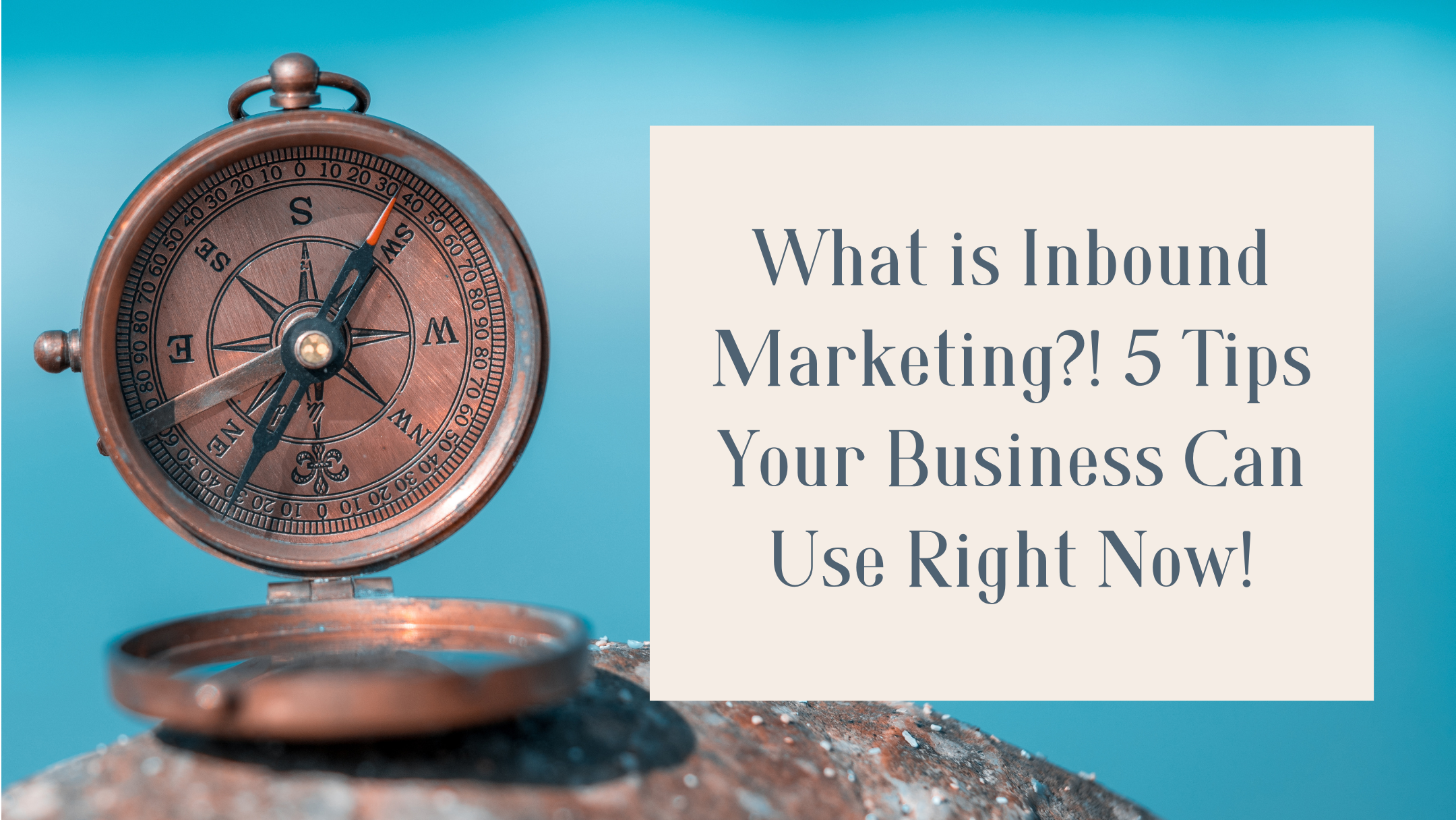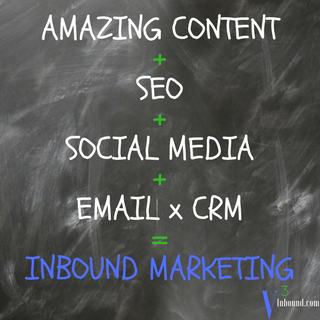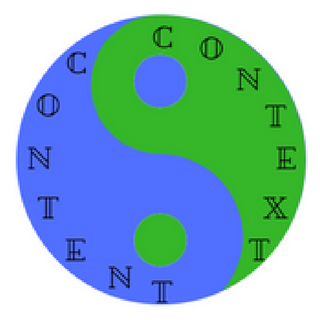
What is Inbound Marketing?! 5 Tips Your Business Can Use Right Now!
Attract and Convert: The Basics of Inbound Marketing
If you don’t have any inbound marketing strategies in your business playbook, chances are your ideal customer is tuning you out. In 2006, people were inundated with nearly 5,000 marketing messages daily. 11 years later you can just imagine how many more we’re all exposed to. Fortunately, (or unfortunately for marketers) technology has also given us ways to block those messages out. Direct mail goes in the shredder. DVR lets us fast forward through commercials. You can put your cell and home phone numbers on call block lists to prevent contact from telemarketers. And if they make it through many cell providers now mark the calls as “scam likely” to dissuade customers from answering. In a world where your customers are determined not to hear you, how do you break through?Hint: You don’t. You make them come to you. Hubspot describes inbound marketing as a holistic, data-driven approach to marketing that attracts individuals to your brand and converts them into lasting customers. Keywords in that definition: attract and convert. It’s a customer-centric methodology that turns masses of strangers into customers and customers into brand ambassadors. These ambassadors help spread your message to more strangers, which creates a cycle of new customers for your business.

If Content is King, Then Context is Queen
Consumers no longer buy like they used to. Gone are the days when advertisements and telemarketing cold calls were the only way to get information about a product before you buy it. With the advent of social media, review sites like Yelp and Glassdoor, and search engines like Google, customers have a wealth of information at their fingertips at any given moment. Since you never know when your customer will be ready to buy, make sure to be there when they are. Inbound marketing is also known as pull marketing. You draw in the attention of your potential buyers and make your company easier to find on search engines through increasing authority/popularity rankings (SEO). In order to do that, you need to make sure the content you create perfectly lines up with your customer’s needs.
If you ensure that your content addresses the immediate or long-term issues your customers are having, you’ll attract highly interested prospects and build both trust and credibility in your business. This is where content and context come in. Understand what kinds of content your ideal customer needs to make a purchase decision, then use that context to tailor your marketing strategy to give it to them when they need it. Publishing and disseminating the right content at the right time will leave your customer saying, “Wow! This is exactly what I needed!” Then they’ll be ready to buy the solution from you.
<script src="//static.leadpages.net/leadboxes/current/embed.js" async defer></script> <img style="cursor:pointer;" data-leadbox-popup="140249e73f72a2:10daf9b18946dc" data-leadbox-domain="v3inbound.lpusercontent.com" src="https://lh3.googleusercontent.com/LZO2FpaA5hxWGd1DtdvHdj2tZfL8dT2fmY9LtitdC6Oa_eUU4F8vA-PkpcU6N36zgBUaXWsOCXHPFr3K6Uqx8Q=s0" alt="Get V3's Acceler8 Guide! "/>
So… Do I really need inbound marketing for my business?
Yes. Absolutely. Chances are you’re already (but not fully) using it. Go back to the equation in the first section. You probably see a few tactics you’re already utilizing. Many companies use social media platforms like Facebook, Twitter, and LinkedIn to reach out to potential customers and employees. You may have an email list customers sign up on that you use to send ads every so often. Your website, though it may not have prime real estate on the first page, comes up when people search for you on google. That’s inbound marketing. Except not living up to its, or your, potential. Creating and implementing a well-defined digital strategy for your business is integral, and it will only become more important in the future. Here’s how it can help:- It can shape your customers’ preferences and influence their purchasing decisions.
- Your message gets sound boosted through social shares and inbound links, which improves your business’s visibility.
- It empowers your clientele by making them well-informed and prioritizing their needs and pain points.
- It increases the awareness and credibility of your business.
- Allows your customers to engage with your brand 24/7, even when you’re not available.
- Inbound helps you generate more and higher quality leads for less money than traditional methods.
- And even more importantly, your efforts build on themselves over time. Content you create today will attract consumers for years to come. (Pro-tip: remember to update it as your industry/practices change)
<script src="//static.leadpages.net/leadboxes/current/embed.js" async defer></script> <img style="cursor:pointer;" data-leadbox-popup="140249e73f72a2:10daf9b18946dc" data-leadbox-domain="v3inbound.lpusercontent.com" src="https://lh3.googleusercontent.com/LZO2FpaA5hxWGd1DtdvHdj2tZfL8dT2fmY9LtitdC6Oa_eUU4F8vA-PkpcU6N36zgBUaXWsOCXHPFr3K6Uqx8Q=s0" alt="Get V3's Acceler8 Guide! "/>
5 Inbound Marketing Tips You Can Institute Right Now
1
SEO: Learn to Repeat Yourself
POP QUIZ: Where does the phrase “inbound marketing” occur in this blog post?
A. The Title.
Try again.
B. Title + Subheadings
Getting warmer.
C. I checked. Definitely Title, Subheadings, & Body Text
Nope you only counted the ones you can see. There are a few you missed.
D. Title, Subheadings, & Body text + URL, Images, & Metadata.
Correct! There are 9 visible in the post, and 5 in the images and metadata. Let’s go into that…
This is known as keyword placement. It’s not hard to guess what the SEO focus keyword for this post is. To make a lengthy and complex process short, SEO or search engine optimization, is the tactic of increasing traffic to a website by ensuring it ranks highly in search engines like Google or Bing. Now how do you achieve that, especially with Google’s algorithm updates? That requires a much longer post. But for now: Best Practices: Put the keywords you want your content associated with in the spots I mentioned. This will give the page or post an SEO boost and place it higher on Google when someone searches for that term. Make sure the keyword present in the title, at least one subheading, the body text, the Meta description or defined excerpt, the pages URL, and the alt text for the images on the page. You can also install and customize one of my favorite SEO plug-ins, Yoast (If your website uses WordPress.Org) to help you optimize your site. Or we can install and configure Yoast for you.
2
Social: Jack of all platforms, master of none.
More isn’t always better. Especially when it comes to the dozens of social media platforms your business could be using. Don’t join every single one. It’ll be far too difficult to keep up with. Consistency is key. Start out using two or three max you’re sure you can be consistent on and regularly turn out valuable content. Best practices: Find out which platforms your ideal customer or “buyer persona” uses and fully establish yourself on it. Make sure your profile is fully developed and is branded to accurately represent your business. Then turn out the kind of content that will intrigue them enough to look for more by going to your website, following you, or joining your email list.3
Social: Listen more than you talk.
Have you ever been around someone who only talked about themselves and never listened to anyone else? You remember how annoying that person was? Great. Don’t be that person. Social media should be a two way, or three way, or hundred way conversation. Best Practices: The 80/20 rule. No, not the one you’re thinking of. This 80/20 rule says that you should promote yourself, your business, or your product about 20% of the time, and use the other 80% interacting with your fans/followers. Respond to customers who ask questions or give feedback. Shout out super engaged followers. Hold twitters chats or run polls to get into the minds of your clients. (Pro-tip: Use that information to come up with new content. When they tell you what they need, give it to them.) Until you’re Beyoncé, you can’t afford to ignore people. Then again, she doesn’t either.4
Content: Your customer doesn’t care what you have to say.
They care how it can help them. Make sure your content is impactful, informative, and, if possible, even a bit entertaining. Chances are your customer searched on Google, Twitter, or Facebook to find a quick answer to a pain point. If they come across your article and click on it, you have to deliver. This is the space to exhibit your authority and knowledge on your subject of expertise. Best Practices: As one of my favorite bloggers Victoria Mason said in her best advice post for new bloggers, “your readers should always leave with something”. Before your reader leaves your Facebook page, blog post, or Twitter TL, give them the answer to their question. Hopefully, even the answers to questions they didn’t know they had. Design your content, whatever it is and wherever you publish it, with that motive in mind. Solve the problems of the people you started your business for.5
Content: Always have a CTA. Several of them.
So someone found your blog post, social media profile, or website. Mazel tov! Now give them something to do when they’re finished. That’s known as a “call to action” or CTA. It could be conveniently placed social media buttons for them to follow you or share your content. It could be a form for them to subscribe to your email list. Or it could be a button leading to other posts on your site so they stay a while longer. Make sure there’s a next step after content consumption that encourages further interaction. (Pro-tip: If nothing else, try to guide readers to related posts. This will lower your bounce rate and a low bounce rate is a very good thing.) Best Practices: There are a few optimal places on your webpage to place CTAs so that the viewer sees them a few times but isn’t overwhelmed. These are: below your post/page header, in line with the content (near the middle), at the end of the post when they finish reading, in the sidebar of the page, and if that’s not enough, you can do a pop up. Though many find them annoying, pop-ups can actually help raise your conversion rate if you’re offer is enticing. Note: You don’t (and shouldn’t) use all of these at once, but try to have aroudn 2-3 CTAs per page/post. As with everything, test it out and adjust to see what works for your business.<script src="//static.leadpages.net/leadboxes/current/embed.js" async defer></script> <img style="cursor:pointer;" data-leadbox-popup="14115f9f3f72a2:10daf9b18946dc" data-leadbox-domain="v3inbound.lpusercontent.com" src="https://lh3.googleusercontent.com/JR3urngMoPSi29Ak4mOmr7aBMbRdE2xV5moph9NwtA_HpFKNBLiElMvGD4SOD0o-qRkDTLqlfF_Tm8KuWvxVGg=s0" alt="Get V3's Acceler8 Guide!"/>

TC Headley
CEO
TC is a passionate social media specialist, WordPress CMS developer, & entrepreneur. She founded V3 with two ideas in mind: No black small business or entrepreneur should fail because they couldn’t attract the right customers, and the solution lies in inbound marketing. Now she enables her clients and readers to find their unique brand visuals, vibe, & voice and make a difference in their businesses.
